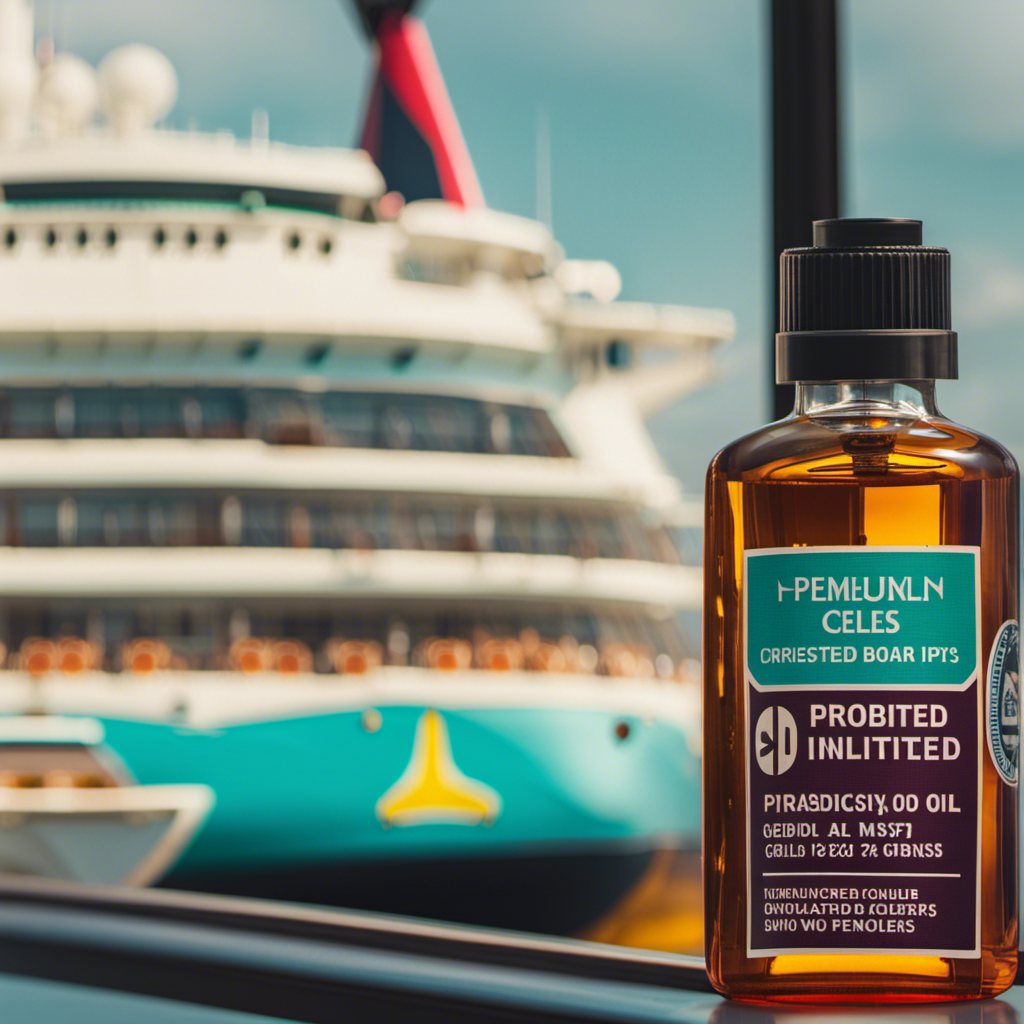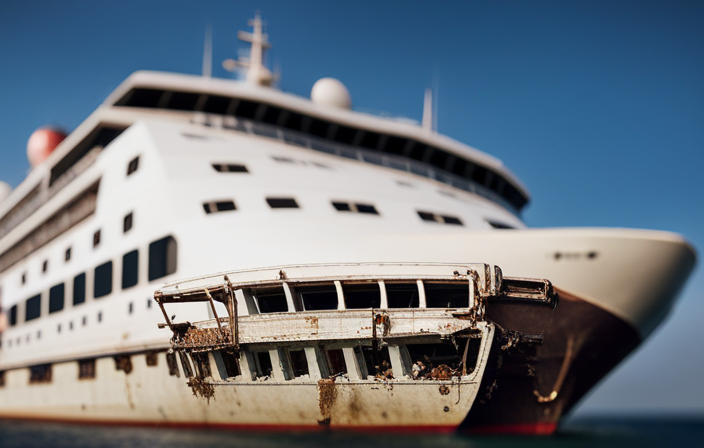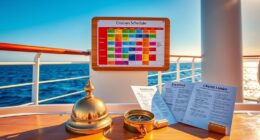Have you ever thought about the amount of fuel you could conserve by utilizing cruise control?
Well, I certainly have. As a curious individual who loves to analyze data and find ways to optimize efficiency, I couldn’t help but delve into the subject.
In this article, I will explore the relationship between cruise control and fuel savings, backed by research and studies. We’ll take a technical and analytical approach to understand the mechanics of cruise control and its impact on fuel consumption.
I’ll also discuss the factors that can affect fuel efficiency and when cruise control may not be as effective. Additionally, I’ll provide some useful tips for maximizing your fuel efficiency and highlight other benefits of using cruise control.
By the end, we’ll have a clear answer to the question: is cruise control worth it for gas savings?
So, let’s dive in and uncover the fuel-saving potential of this popular automotive feature.
Key Takeaways
- Cruise control reduces jerky movements and promotes a smoother flow of traffic.
- Studies and data show significant fuel savings with cruise control, ranging from 2.5% to 6.5% at different speeds.
- However, cruise control may be ineffective on hilly terrain and during traffic congestion or stop-and-go situations.
- To maximize fuel efficiency with cruise control, it is important to maintain a steady speed, avoid aggressive driving, stick to the speed limit, and adjust speed according to road conditions.
How Cruise Control Works
Cruise control works by automatically adjusting the speed of the vehicle, allowing drivers to relax and enjoy the journey while saving on gas.
This innovative cruise control technology utilizes sensors to detect the current speed of the vehicle and compare it to the desired speed set by the driver. It then adjusts the throttle and braking system accordingly to maintain a consistent speed.
By maintaining a steady speed, cruise control reduces the fluctuations in acceleration and deceleration that can lead to increased fuel consumption. In addition to the convenience it offers, using cruise control has been proven to have several benefits.
Studies have shown that it can improve fuel efficiency by up to 7%, which translates into significant savings over time. Understanding the benefits of using cruise control, it is important to explore the relationship between speed and fuel efficiency.
The Relationship Between Speed and Fuel Efficiency
Slow down on the open road and watch as your fuel consumption shrinks, revealing the hidden treasure of fuel efficiency. When it comes to saving gas, speed plays a crucial role. The faster you go, the more fuel you burn. It’s a simple equation that many drivers overlook.
By maintaining a steady speed with cruise control, you can optimize your fuel consumption. Here are some fuel consumption tips to consider:
- Reduce your speed: Driving at high speeds significantly increases fuel consumption.
- Avoid rapid acceleration: Quick starts use more fuel than gradual acceleration.
- Plan your route: Avoid heavy traffic and stop-and-go driving to maximize fuel efficiency.
By following these tips and being mindful of your driving style, you can make a significant impact on your fuel consumption.
In the next section, we will explore the factors that impact fuel consumption and delve deeper into maximizing efficiency.
Factors That Impact Fuel Consumption
Driving Conditions, vehicle weight and aerodynamics, and tire pressure and maintenance are all key factors that impact fuel consumption. When driving, factors such as traffic congestion, road conditions, and weather conditions can significantly affect fuel efficiency.
Additionally, the weight and aerodynamics of a vehicle play a crucial role in fuel consumption. Heavier vehicles require more power to move and less aerodynamic vehicles experience more wind resistance.
Lastly, maintaining proper tire pressure and regularly servicing the vehicle can optimize fuel efficiency. This is done by reducing rolling resistance and ensuring the engine is running smoothly.
Driving Conditions
On a clear, open road with no traffic or obstacles, you can effortlessly glide along while cruise control efficiently manages your speed. This driving technique can lead to significant fuel savings by maintaining a consistent speed and reducing unnecessary acceleration and deceleration. However, it’s important to consider that driving conditions play a crucial role in determining the overall fuel consumption.
Factors such as road conditions can impact the effectiveness of cruise control in saving gas. For example, driving on hilly terrains may require the vehicle to exert more power, resulting in increased fuel consumption. Similarly, adverse weather conditions like strong winds or heavy rain can also affect fuel efficiency. Additionally, traffic congestion and stop-and-go situations can limit the benefits of cruise control, as constant speed changes are necessary.
Considering these driving conditions, it becomes evident that the impact of cruise control on fuel savings can vary.
In the subsequent section about vehicle weight and aerodynamics, we’ll explore another crucial factor that influences fuel consumption.
Vehicle Weight and Aerodynamics
The weight of your vehicle and its aerodynamics have a significant impact on how efficiently you can travel. When it comes to fuel consumption, both factors play a crucial role.
A heavier vehicle requires more energy to move, resulting in increased fuel consumption. On the other hand, a vehicle with poor aerodynamics creates more drag, which also leads to higher fuel consumption. Therefore, it is essential to consider vehicle weight and aerodynamics when calculating the potential gas savings of using cruise control.
Vehicle maintenance is crucial in maintaining optimal performance and fuel efficiency. Regular maintenance, such as keeping the engine tuned, ensures that the vehicle operates at its best. Other factors, like tire pressure and maintenance, also affect fuel consumption.
By maintaining proper tire pressure and addressing any maintenance issues promptly, you can further maximize gas savings.
Tire Pressure and Maintenance
After discussing the impact of vehicle weight and aerodynamics on fuel efficiency, it’s crucial to address another aspect that directly affects the performance of a car’s fuel consumption: tire pressure and maintenance.
Maintaining proper tire pressure is vital for reducing rolling resistance and improving gas mileage. Underinflated tires increase friction and require more engine power to move the vehicle forward, resulting in higher fuel consumption.
Additionally, regular tire rotations ensure even wear and extend tire life, contributing to better fuel efficiency. Moreover, replacing the fuel filter at recommended intervals ensures that the engine receives clean fuel, optimizing its performance and fuel economy.
By properly maintaining tire pressure and conducting routine maintenance tasks such as tire rotation and fuel filter replacement, drivers can maximize their vehicle’s fuel efficiency.
Now, let’s delve into the impact of cruise control on fuel efficiency.
The Impact of Cruise Control on Fuel Efficiency
When it comes to fuel efficiency, two key factors are consistent speed and RPM, as well as smoother acceleration and deceleration.
Using cruise control helps maintain a constant speed, which can optimize fuel consumption by preventing unnecessary acceleration and deceleration.
Additionally, cruise control ensures that the engine operates at a consistent RPM, which can also contribute to fuel efficiency.
Consistent Speed and RPM
While using cruise control, you can imagine your car maintaining a steady speed and RPM like a train gliding along its tracks. This consistency in speed and RPM is one of the key benefits of cruise control.
By setting a desired speed, cruise control keeps your car moving at a constant rate, which leads to consistent fuel consumption. When you drive without cruise control, your speed tends to fluctuate, causing your engine to work harder and consume more fuel. However, with cruise control, your car maintains a steady pace, resulting in more efficient fuel usage.
This consistency in fuel consumption can lead to significant savings in gas over time. Now, let’s explore how cruise control also contributes to smoother acceleration and deceleration.
Smoother Acceleration and Deceleration
One of the advantages of using cruise control is that it helps to create a more seamless transition between accelerating and decelerating. This results in a smoother driving experience overall.
Here are four reasons why cruise control contributes to a smoother driving experience and its impact on traffic flow:
-
Consistent speed: Cruise control maintains a constant speed, eliminating sudden accelerations or decelerations that can cause jerky movements.
-
Predictable braking: With cruise control, the vehicle decelerates gradually and predictably, allowing other drivers to anticipate your movements.
-
Reduced traffic congestion: By maintaining a steady speed, cruise control helps to prevent unnecessary lane changes and sudden speed fluctuations, promoting a smoother flow of traffic.
-
Improved fuel efficiency: By avoiding erratic driving patterns, cruise control can help optimize fuel consumption, leading to potential savings.
In the subsequent section about studies and research on fuel savings with cruise control, we’ll explore the quantitative impact of using cruise control on gas consumption.
Studies and Research on Fuel Savings with Cruise Control
Research shows that using cruise control can save drivers up to 7% on fuel consumption. Numerous studies and data have been conducted to analyze the impact of cruise control on fuel efficiency. These studies carefully examine the relationship between vehicle speed, fuel consumption, and the use of cruise control. One such study conducted by the American Automobile Association (AAA) found that using cruise control on the highway resulted in significant fuel savings compared to manual speed control. The table below highlights the findings from this study:
| Vehicle Speed (mph) | Fuel Consumption Savings (%) |
|---|---|
| 50 | 2.5 |
| 60 | 4.5 |
| 70 | 6.5 |
These results clearly demonstrate the effectiveness of cruise control in reducing fuel consumption. By incorporating cruise control into their driving habits, drivers can achieve substantial fuel savings. In the next section, we will explore real-world examples and testimonials from drivers who have benefited from using cruise control.
Real-world Examples and Testimonials
Imagine the thrill of cruising down the open road, effortlessly saving on fuel consumption and leaving more money in your pocket. Real-world testimonials and fuel savings research provide compelling evidence of the benefits of using cruise control.
Testimonial 1: "I was skeptical at first, but after using cruise control on a long road trip, I noticed a significant decrease in my fuel consumption. I ended up saving 10% on gas!"
Testimonial 2: "As a truck driver, I rely on cruise control to maintain a consistent speed. Not only does it make my job easier, but it also saves me money on fuel costs."
Research studies have also shown that using cruise control can improve fuel efficiency by up to 7%. By maintaining a steady speed, cruise control eliminates the need for sudden accelerations and decelerations, which can waste fuel. Additionally, it helps to minimize speed fluctuations caused by human error.
Transitioning into the next section, it’s important to consider when cruise control may not be as effective.
When Cruise Control May Not Be Effective
Picture yourself cruising down the highway, feeling the freedom of the open road, but there are times when relying on cruise control may not be the most effective choice. One such scenario is when driving on hilly terrain. Cruise control operates by maintaining a constant speed, which can result in excessive acceleration uphill and unnecessary braking downhill. This constant speed approach can lead to inefficiencies in fuel consumption. Another situation where cruise control may not be as effective is during traffic congestion. Stop-and-go traffic requires frequent acceleration and deceleration, which can disrupt the smooth operation of cruise control. The constant adjustments made by the system can increase fuel consumption and negate any potential gas savings. Understanding the limitations of cruise control is crucial for maximizing fuel efficiency. Transitioning into the next section, let’s explore additional tips for optimizing fuel consumption.
Additional Tips for Maximizing Fuel Efficiency
To truly unlock the secrets of the road and become a fuel efficiency master, let’s delve into some additional tips that’ll have you gliding down the highway like a graceful swan.
Here are five tips for highway driving that can further maximize your fuel efficiency while using cruise control:
-
Maintain a steady speed: Cruise control helps you maintain a consistent speed, reducing unnecessary acceleration and deceleration, ultimately saving fuel.
-
Avoid aggressive driving: Rapid acceleration and braking consume more fuel. Cruise control helps you maintain a smoother driving style, optimizing fuel efficiency.
-
Stay within the speed limit: Excessive speed not only puts you at risk but also decreases fuel efficiency. Cruise control can help you stick to the speed limit, saving both fuel and potential fines.
-
Be mindful of road conditions: Adjust your speed and use cruise control accordingly to adapt to changing road conditions, such as hills or strong headwinds.
-
Minimize unnecessary idling: If you encounter traffic or need to stop for a short period, consider disengaging cruise control to avoid unnecessary idling and save fuel.
By following these tips for highway driving and taking advantage of the benefits of using cruise control, you can optimize your fuel efficiency and enjoy a more cost-effective and comfortable journey.
Next, we’ll explore the other benefits of using cruise control.
Other Benefits of Using Cruise Control
Experience the smooth and effortless ride of maintaining a consistent speed while using cruise control, enhancing your driving experience.
Apart from fuel efficiency, there are other benefits to using cruise control. Firstly, it can help reduce fatigue on long drives by allowing you to relax and focus more on the road ahead.
Additionally, cruise control can contribute to safer driving as it helps maintain a steady speed, preventing sudden accelerations or decelerations. This can result in fewer accidents caused by driver error.
However, it’s important to note that cruise control may have potential drawbacks. It may not be suitable for driving in heavy traffic or on hilly terrain where frequent speed adjustments are required.
In conclusion, the benefits of using cruise control extend beyond just saving gas, but it’s important to consider the specific driving conditions before relying solely on this feature.
Conclusion: Is Cruise Control Worth It for Gas Savings?
Imagine the freedom and ease you’ll feel as you effortlessly maintain a consistent speed, allowing you to relax and focus on the road ahead with cruise control. But is it worth it for gas savings? The answer is a resounding yes.
Cruise control is an effective tool for maximizing fuel efficiency. By maintaining a constant speed, cruise control eliminates unnecessary acceleration and deceleration, reducing fuel consumption. Studies have shown that using cruise control can save up to 7% on fuel consumption during highway driving.
Additionally, cruise control helps to prevent speeding, which can further improve fuel efficiency. The benefits of cruise control go beyond just saving gas. It also reduces driver fatigue, improves safety by promoting consistent speeds, and allows for a more enjoyable driving experience.
So, if you’re looking to save money on gas and have a smoother ride, cruise control is definitely worth it.
Frequently Asked Questions
Can cruise control be used in any type of vehicle?
Yes, cruise control can be used in any type of vehicle, including electric cars. It offers numerous benefits such as reducing driver fatigue and improving fuel efficiency, especially in heavy traffic situations.
Does using cruise control have any negative effects on the engine?
Using cruise control has minimal negative effects on fuel efficiency and engine performance. It helps maintain a consistent speed and reduces unnecessary acceleration, resulting in improved fuel efficiency and reduced wear on the engine.
How does cruise control affect fuel consumption in city driving?
Using cruise control in city driving can reduce fuel consumption by maintaining a consistent speed, reducing acceleration fluctuations caused by traffic congestion. This also helps to alleviate driver fatigue by reducing the need for constant speed adjustments.
Are there any safety concerns when using cruise control?
When using cruise control, it is important to follow safety precautions to minimize potential distractions. These include maintaining focus on the road, being prepared to take control of the vehicle, and adjusting speed to changing traffic conditions.
Can cruise control be used in hilly or mountainous terrain?
Cruise control can be used in hilly or mountainous terrain, optimizing fuel efficiency during downhill driving. Studies show that using cruise control on downhill stretches can lead to an average fuel savings of 7-14%.
Conclusion
After diving deep into the world of cruise control and fuel efficiency, it’s clear that this technological marvel has the potential to save us precious gas and money.
Just like a steady stream flowing through a river, cruise control helps maintain a consistent speed, resulting in optimal fuel consumption.
However, it’s important to remember that cruise control may not be effective in certain situations, such as heavy traffic or hilly terrain.
Nevertheless, when used correctly, this tool can be a valuable ally in our quest for fuel efficiency and a greener future.
Claire, a creative soul with an unquenchable thirst for storytelling, is an integral part of the Voyager Info team. As a dedicated writer, she weaves captivating narratives that transport readers to enchanting cruise destinations and beyond.
Claire’s love affair with writing began at an early age when she discovered the magic of words and their ability to craft worlds and emotions. Her innate curiosity led her to explore various literary genres, but it was travel writing that truly captured her heart. Drawing inspiration from her own globetrotting adventures and encounters with diverse cultures, Claire embarked on a journey to become a travel writer par excellence.











